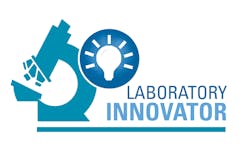Children’s Hospital of Philadelphia (CHOP) is a stellar institution. The Infectious Disease Diagnostics Lab, as well as the division at large, are full of passionate, talented people. It was also clear that CHOP is willing to put resources toward clinical innovation in the lab. I was practicing general clinical pathology in my previous role, but microbiology has always been my first love. So, I jumped at this opportunity when it became available to me.
How do test development protocols differ when intended for pediatric versus adult patients/medicine?
I believe innovation and more extensive validations of commercial products are often a necessity for labs in children’s hospitals. There may not be a commercial test available to meet a pediatric testing need, or manufacturers may not have evaluated the tests for a pediatric population. I believe children’s hospitals have been leaders in lab-developed molecular testing for that reason; for example, in the use of lab-developed respiratory viral panels before the availability of commercial respiratory viral panels (RVPs).
What do you see as potentially the “new normal” in pediatric testing with regard to infectious diseases, and do you think influenza and COVID-19 can coexist if necessary as we go into the second half of the year?
While hoping for the best, we are preparing our lab for the potential of an unprecedented viral season that includes both flu and COVID. We are planning to add the SARS-CoV-2 assay to our RVP, and we are looking critically at our ability to provide sufficient rapid testing (for flu, as well as for the coronavirus) if commercial rapid tests remain in short supply.
With many diagnostic companies looking to partner in developing rapid tests to detect SARS-CoV-2 (the virus that causes COVID-19), why did CHOP decide to develop their own test?
We chose to develop our assay because it was the only option. Only the CDC (Centers for Disease Control and Prevention) and public health laboratories had authorization for testing when we began development, and no commercial test had received an FDA (U.S. Food and Drug Administration) Emergency Use Authorization (EUA). We knew we would want to test in-house since access to testing was limited. We hoped the FDA would loosen the initially stringent requirements for test authorization, which is what fortunately happened. We have continued using our LDT (lab-developed test) because we are happy with its performance, and we experienced very few problems in the supply chain for test materials.
What were some of the biggest challenges in developing your molecular lab-developed test (LDT) for detecting COVID-19 (SARS-CoV-2 RT-PCR test) and getting an Emergency Use Authorization (EUA) from the FDA?
There was tremendous pressure to develop a test, and we were racing against the spread of the virus. We completed most of the validation in a little over a month. We threw everything we had toward the project and, fortunately, had skilled technologists well-versed in molecular test development. The entire lab chipped in to complete the validation process in a short amount of time. The FDA initially had specific requirements for the validation studies to obtain an EUA, which differed significantly from what we would usually do for validation, more akin to what a manufacturer would do to obtain FDA approval to sell a product. The FDA eventually relaxed those requirements.
The recommendations for testing – like using paired nasopharyngeal and oropharyngeal swabs – and the requirements for the test itself – like having multiple targets – seemed to change almost daily. So, we made a number of modifications during the validation process. It was difficult to obtain the type of positive reference material required by the FDA for validation studies because almost no one in the U.S. had positive samples. January of 2020 feels like a different world. So far, we have been fortunate to meet our testing needs with our LDT, but we will need thoughtful management of our resources and further innovation as we contend with this ongoing pandemic going forward.


